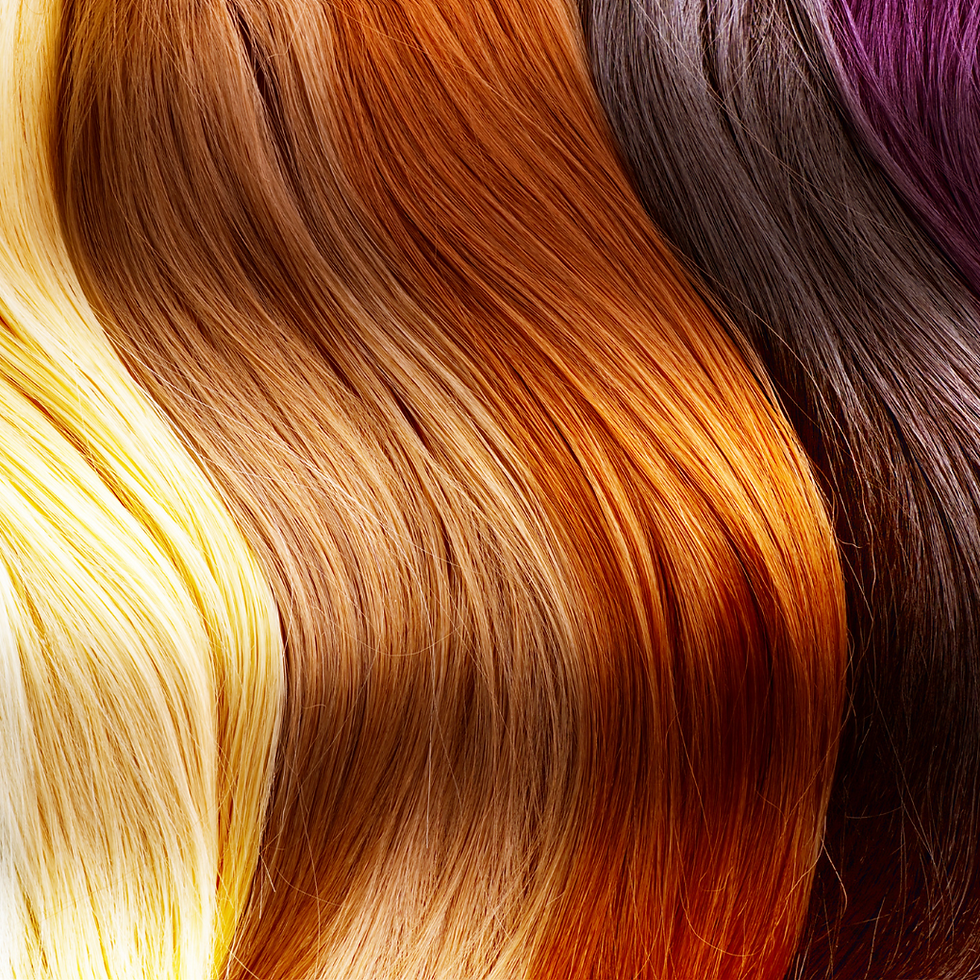Mastering Your Hair Vocabulary: 20 Essential Terms Explained
- Pierino Scarfo

- Mar 1, 2024
- 3 min read
Navigating the world of hair can sometimes feel like deciphering a foreign language, with hairstylists tossing around terms that may leave you scratching your head. Yet, understanding these terms is crucial for effective communication with your stylist and achieving the hairstyle of your dreams. In this article, the experts at Pierino Scarfo Salon in Westboro are here to decode 20 common hair terms. From trendy techniques to classic styles, we've got you covered.
1. ASYMMETRICAL CUT:
An asymmetrical cut features hair lengths that are intentionally uneven, creating dimension and a flattering frame around the face. This style adds a modern twist to traditional cuts.
2. BALAYAGE:
Pronounced "bah-lee-ahge," balayage is a French technique involving hand-painted highlights for a natural, sun-kissed effect. This method allows for seamless blending and easy grow-out, perfect for low-maintenance hair.
3. BRASSY:
Brassy refers to unwanted warm tones, such as yellow or orange, that can develop in lightened hair. Toning products can help counteract these tones for a more balanced color.
4. COLOUR MELT:
A colour melt technique involves blending three or more shades seamlessly, creating a soft transition between colors for a natural, gradient effect.
5. CROP:
A crop haircut features short, textured layers, with longer hair on top and shorter sides and back. This versatile style can be tailored to suit various preferences and face shapes.
6. DRY CUT:
A dry cut technique involves cutting hair when it's dry rather than wet. This method allows for better assessment of hair movement and texture, making it ideal for fine or thin hair types.
7. DUSTING:
Dusting is a trimming technique that removes only damaged ends without affecting the overall length of the hair. Regular dusting helps prevent split ends and promotes healthy hair growth.
8. FACE FRAMING:
Face framing involves cutting hair around the face in varying lengths to enhance facial features and create volume and movement.
9. FEATHERING:
Feathering is a layering technique that creates texture and volume by finely layering hair. This technique, popularized in the 1970s, is ideal for adding volume to fine hair textures.
10. FRINGE:
A fringe, also known as bangs, refers to hair that is cut to frame the forehead. There are various fringe styles, including curtain, blunt, baby, and textured fringes.
11. GLAZE:
A hair glaze is a non-permanent color treatment that adds shine and reduces frizz. It acts as a top coat for the hair, enhancing natural color and lasting for 1-2 weeks.
12. GLOSS:
A gloss is a semi or demi-permanent color treatment that adds shine and luster to the hair without penetrating the hair shaft. It's a low-maintenance option for enhancing natural color or adding subtle tones.
13. HAIR PAINTING:
Hair painting is a lightening technique that involves applying lightener in a custom, organic manner to create a soft, natural look. Balayage is a popular example of hair painting.
14. HIGHLIGHTS:
Highlights involve using lightener or color to lift the brightness of hair color. Foils are typically used to apply highlights, creating a subtle or dramatic lightened effect.
15. LAYERS:
Layers are a cutting technique that involves cutting hair at different lengths to create definition, volume, and movement. This technique is versatile and can be tailored to various hair lengths and textures.
16. LOWLIGHTS:
Lowlights are the opposite of highlights, involving the application of darker color to create depth and contrast. Foils are used to apply lowlights throughout the hair.
17. MONEY PIECE:
A money piece is a bright highlight around the face, often framing the hairline. This technique adds brightness and dimension to the hair with minimal effort.
18. ROOT SMUDGE:
A root smudge involves blending color from the roots downward to create a seamless transition. This technique is perfect for low-maintenance looks with easy grow-out.
19. TONER:
A toner is a liquid formula applied after coloring or lightening to neutralize unwanted tones. It helps achieve the desired shade and can be maintained at home with toning products like purple shampoos and conditioners.
20. TEXTURIZING:
Texturizing involves cutting or styling techniques to enhance the texture and movement of the hair. This can include techniques such as razor cutting, point cutting, or texturizing shears.
Conclusion:
By familiarizing yourself with these essential hair terms, you'll be better equipped to communicate with your stylist and achieve your desired hairstyle. Whether you're visiting our Westboro hair salon or talking with a friend, understanding these terms will help you navigate your hair journey with confidence. Don't hesitate to ask your Westboro hair stylist for guidance or clarification on any hair-related terminology. Together, we'll ensure you leave the salon feeling confident and beautiful, with a hairstyle that's tailored to your unique preferences and lifestyle.
For any hair-related questions, don't hesitate to ask our Westboro hair stylists during your next salon visit. Follow us on social media @pierinoscarfo.salon, and explore our services and pricing on our website at www.pierinoscarfo.com.
Cheers,
The Hair Stylist Specialists at Pierino Scarfo Hair Salon in Westboro, Ottawa.






コメント